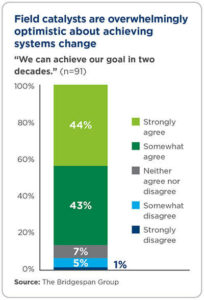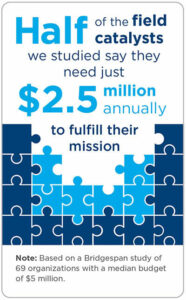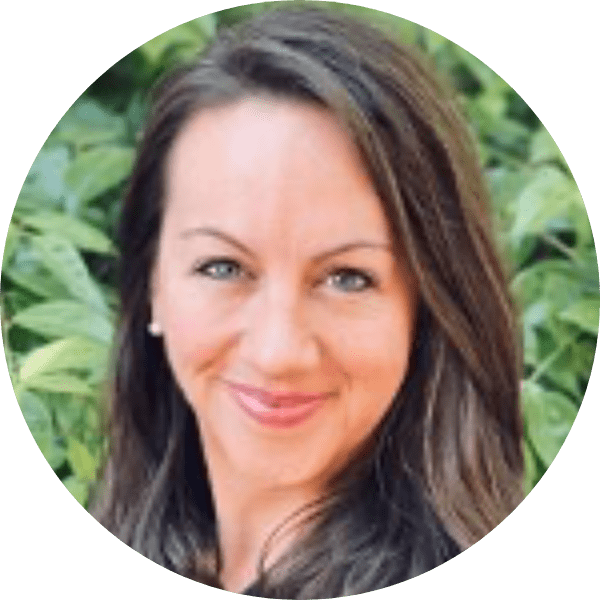3 min read
Co-author: Emma Nothmann, Kevin Crouch, and Cora Daniels
Even with modest beginnings, systems-change organisations seek world-changing outcomes. But solving complex social problems offers unique challenges. We surveyed these social-change makers to learn what they can use most from funders.
In mission-driven circles, systems-change work — which is focused on the root causes of problems — is sometimes treated like an unattainable dream. At The Bridgespan Group, we call the organisations that are often key to unlocking equitable systems change “field catalysts.” While equitable systems change requires a diverse set of actors playing distinct and complementary roles across a field or ecosystem[1], field catalysts harmonise and drive that multifaceted work, serving as a kind of nerve center for the matrix of activity needed to transform our inequitably designed systems[2].


Our research indicates one key truth: field catalysts are among the highest-leverage investments philanthropy can make when it comes to equitable systems change.
We found that field catalysts are persistently underfunded, with most needing to raise between half to twice their current budget. Still, because these organisations consistently punch far above their weight, 87 percent of field catalysts believe they would achieve their systems-change goals within just two decades if provided the necessary resources and consistent support. Imagine that! This held true even for leaders of color, who have historically received the lowest amounts of funding.
Notably, the median funding gap of how much field catalysts in our dataset say they need annually to fulfill their mission is just $2.5 million. That means closing that funding gap could be a relative bargain, considering the inroads these efforts can make to building a society characterized by equity and justice.
Field catalysts reported facing four common challenges:
- Talent Constraints: Fifty-seven percent report that they struggle with significant internal capacity issues.
- Measuring Impact: Nearly half said they found it difficult to measure their impact for funders. Systems change is a multi-decade effort and field catalysts need to rely on a variety of measurement indicators that reflect the scope of progress of the ecosystem overall.
- Finding Balance: About half described difficulty balancing the work — having to deal with the urgency of the existential threats while also raising enough funding for the next year of work, for example.
- Lack of Sufficient, Long-term, Flexible Funding: As one interviewee said, “Being behind the scenes is lethal from a fundraising perspective. How do you tell your story when the story is by design invisible?” Of course, the challenge of funding can exacerbate and amplify all the other challenges.
The research revealed that funder behavior does matter. By intentionally creating the conditions that enable a field catalyst to thrive, funders can shift the odds in favor of lasting population-level change. Alternatively, we found that funders can also create obstacles and roadblocks for systems-change leaders that will continue to slow their progress. The study offers practical advice for funders interested in the kind of social change required to build a more equitable society.
Orchestrating the work of equitable systems change is incredibly challenging. Sometimes the journey is fraught and field catalyst organisations are forced to sunset without having to achieve their systems-change goals, leaving leaders burned out and frustrated. We see this not as a leader’s or an organisation’s failure, but as a systemic failure of the social sector for not adequately supporting the types of organisations or leaders that are doing the most complex and messy systems-change work. (See: “Field Catalyst Origin Stories: Lessons for Systems-Change Leaders.”)
Lastly, equitable systems change does not have to be a dream deferred. As a reminder, field catalysts overwhelmingly believe they would achieve their systems-change goals within just two decades if provided the necessary resources and consistent support. It is a sign that, as complex as the problems are, as difficult as the work is to overcome them, as far away as the finish line may seem, there is a pathway to get there. And the reality is, it won’t be a single superhero who will swoop in to save the day. Instead, it will be an entire collective — nonprofit field actors, grassroots efforts, field catalysts, impacted people, and, yes, funders — strategically and intentionally working together, that will get us there.
[1] Lija Farnham, Emma Nothmann, Zoe Tamaki, and Cora Daniels, Field Building for Population-Level Change, The Bridgespan Group, March 27, 2020.
[2] Lija Farnham, Emma Nothmann, Zoe Tamaki, Nate Harding, and Cora Daniels, How Philanthropy Can Support Systems-Change Leaders, The Bridgespan Group, January 14, 2021


















